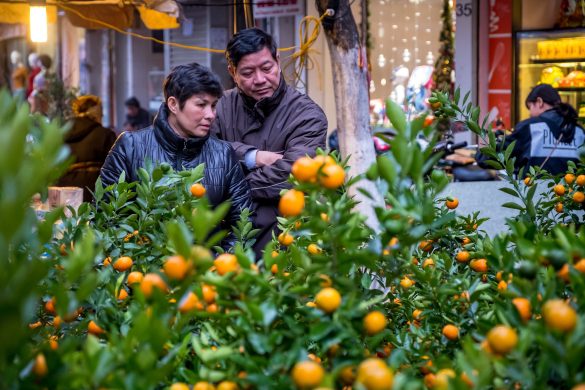Ny platform på nettet skal være med til at nedbringe det enorme madspild, der på verdensplan løber op i 1.300 milliarder ton om året. Gennem platformen skal det være muligt at holde sig opdateret om projekter og programmer, der kan sikre høsten og reducere spildet.
24 October 2014, Rome (FAO): Attempts to reduce food losses and waste, which account for one third of food produced for human consumption, have received a boost through a new online platform that brings together for the first time a range of resources and allows stakeholders to share experiences and best practices.
The Global Community of Practice (CoP) on Food Loss Reduction is launched jointly by the three Rome-based United Nations agencies, the Food and Agriculture Organization (FAO), the International Fund for Agricultural Development (IFAD) and the World Food Programme.
The platform is part of “Mainstreaming Food Loss Reduction for Smallholders in Food Deficit Areas,” an ongoing project by FAO, IFAD and WFP which is funded by the Swiss Agency for Development and Cooperation (SDC).
The Global Community of Practice on Food Loss Reduction aims to become a global reference point that facilitates the sharing of information and linkages between stakeholders including public entities, civil society and the private sector.
The platform allows stakeholders to stay tuned on relevant news and events and access links to online libraries, databases, repositories with relevant materials and also social networks.
A number of online trainings and e-learning modules on post-harvest management will also be available on the platform.
“When food is saved, the resources used to produce it are saved. Reducing waste and losses by not creating these in the first place should be a priority for all,” FAO Deputy-Director General, Natural Resources, Maria Helena Semedo said referring to the initiative.
Semedo stressed that more than 800 million people in the world still suffer from hunger.
Lost or wasted food could feed 2 billion people
It is estimated that roughly 30 percent of global food production, that is 40-50 percent of root crops, fruits and vegetables, 20 percent of oilseeds, meat and dairy products and 35 per cent of fish, is either lost or wasted. This amounts to some 1.3 billion tonnes – or enough food to feed 2 billion people.
IFAD Vice-President Michel Mordasini highlighted the importance of farmers in reducing food losses noting how food losses remain “unacceptably high and greatly impact smallholder farmers who are most vulnerable”.
“The available technical solutions still have to be made accessible and affordable to those farming communities. I am therefore encouraged by the fact that the Global Community of Practice on Food Losses will engage with and tap into the knowledge of farmers and practitioners, as well as researchers, development agencies and policymakers,” Mordasini said.
WFP Assistant Executive Director, Ramiro Lopes da Silva, welcomed the launch of the new platform and noted how WFP’s own Post-Harvest Loss Reduction initiative currently reaches 16,000 smallholder farm families in Uganda, with the aim of reducing post-harvest losses by 70 percent amongst participating smallholder farmers.
“Through the CoP, we look forward to sharing these experiences and best practices with other organizations involved in similar efforts,” Lopes da Silva said.
A global reference point
By accessing the platform it is possible to stay informed on projects and programmes on food loss reduction and post-harvest management, including the: Global Initiative on Food Loss and Waste Reduction, SAVE FOOD.
Stakeholders will also be able to participate in online moderated discussion fora. The first of these runs until 13 January 2015 and covers the topic: Losses occurring along maize supply chains: levels, causes and solutions promoted. The platform is currently available in English, French and Spanish.
Pilot projects
The “Mainstreaming Food Loss Reduction for Smallholders in Food Deficit Areas” project envisages a number of other outcomes besides the CoP platform.
These include improved handling and storage options within grains and pulses value chains for smallholder farmers in several pilot countries: Burkina Faso, the Democratic Republic of Congo and Uganda.














